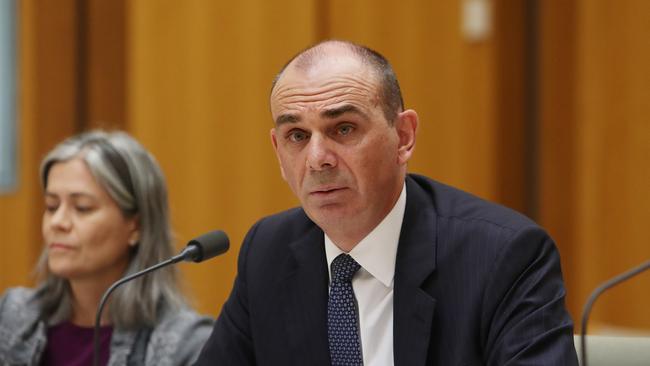APRA flags higher capital requirements for banks on risky home loans
APRA wants banks to hold higher levels of capital for riskier home loans as part of a reform package.

The banking regulator wants lenders to hold higher levels of capital for riskier home loans, such as interest-only mortgages and investor loans, as part of a package of sweeping reforms.
In a statement, the Australian Prudential Regulation Authority said it would take a more granular approach to how much capital banks set aside for mortgages by proposing higher requirements for loans deemed more risky.
Currently mortgages have the same capital requirements under APRA standards.
The package of proposed changes, first released for consultation in February last year, emanate from the finalised Basel III reforms as well as the Financial System Inquiry recommendation for the capital ratios of domestic banks to be “unquestionably strong”.
APRA’s statement said it didn’t expect banks would need to raise additional capital as a result of the changes if they already meet its other core capital threshold to be “unquestionably strong”.
For large banks, the APRA proposal seeks to impose a 1.5 times multiplier over global benchmarks for capital required on owner occupied principal and interest loans while that will be two times for interest-only and investor loans.
Shaw and Partners senior analyst Brett Le Mesurier said the plan meant owner occupied mortgages, where interest and principal was being repaid, would require 25 per cent less capital to be held compared to other residential home loans.
“They’ll (APRA) enshrine the premium paid by investor and interest-only mortgagees,” he said, noting that banks with larger books of those types of loans including Westpac may be disadvantaged.
Shares of the big four banks dropped between 0.8 per cent and 1.4 per cent on Wednesday, while Bendigo and Adelaide Bank and Bank of Queensland also fell. Suncorp bucked the trend and edged up 0.5 per cent.
For smaller banks, there is a tiered structure under APRA’s plan.
For example, where a loan-to-value ratio is 60-80 per cent on an owner occupied principal and interest mortgage, the risk weight stays steady at 35 per cent under APRA’s plan. But for investment and interest-only mortgages on the same LVR the risk weight rises from 35 per cent to 45 per cent.
APRA chairman Wayne Byres said the regulator did not expect “any material impact” on the availability of credit due to the latest capital proposals.
“APRA has sought to balance its primary objectives of implementing the Basel III reforms and “unquestionably strong” capital ratios with a range of important secondary objectives,” he said.
“These objectives include targeting the structural concentration in residential mortgages in the Australian banking system, and ensuring an appropriate competitive outcome between different approaches to measuring capital adequacy.”
The planned changes come after APRA removed growth limits on banks relating to their investor loan and interest-only mortgage books. Those limits had already prompted differential pricing in that part of the market.
For the big four banks the unquestionably strong threshold is a common equity tier one ratio of 10.5 per cent by 2020.
Australian Banking Association chief Anna Bligh said: “The reforms to the APRA capital framework is the next important step in delivering on the Basel reforms to ensure the unquestionable strength of our banking system and the industry will make a full submission in the coming months.”
The proposals — which also take into account mooted changes to bank interest rate buffers for mortgages when they assess a borrower’s ability to repay — are not due to come into effect until 2022. APRA will take further submissions until September 6.
The APRA plan won’t materially alter the capital requirement differential between the big four banks and their smaller counterparts, which the regulator stands at about five basis points.
Several smaller banks had this year upped their calls for a levelling of the playing field.
The Customer Owned Banking Association appears to accept APRA’s latest position, welcoming continued discussion.
“This commentary is a very welcome contribution to debate about levelling the playing field and removing competitive distortions in the regulatory framework,” COBA boss Mike Lawrence said.
APRA’s statement did not, however, provide any clarity over its consultations with regulators in New Zealand over proposed tougher capital requirements in that market where Australian banks are dominant.
APRA said it was “actively engaging” with the Reserve Bank of New Zealand.




